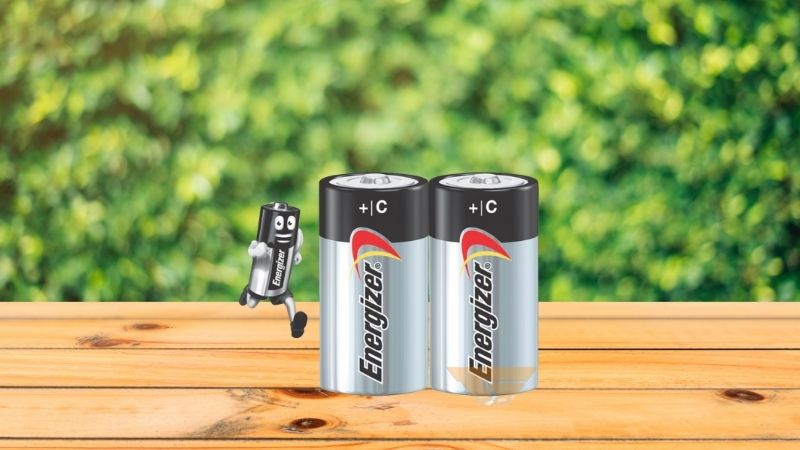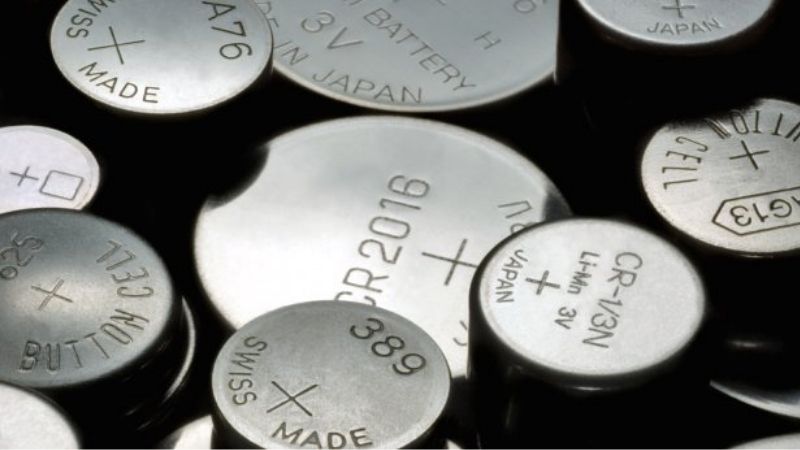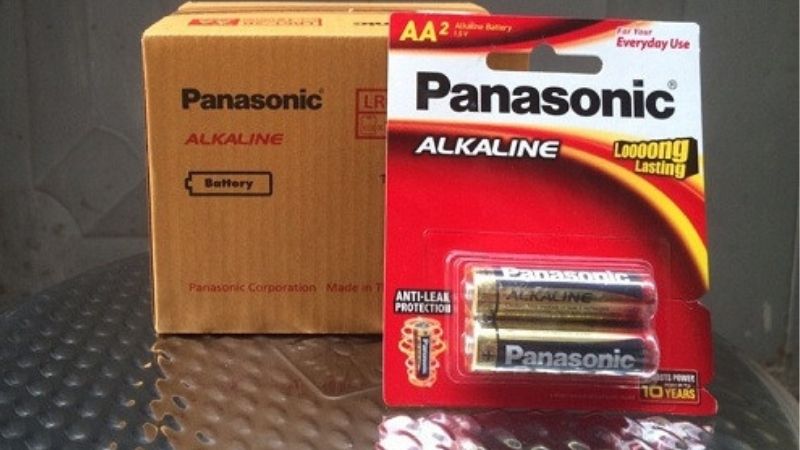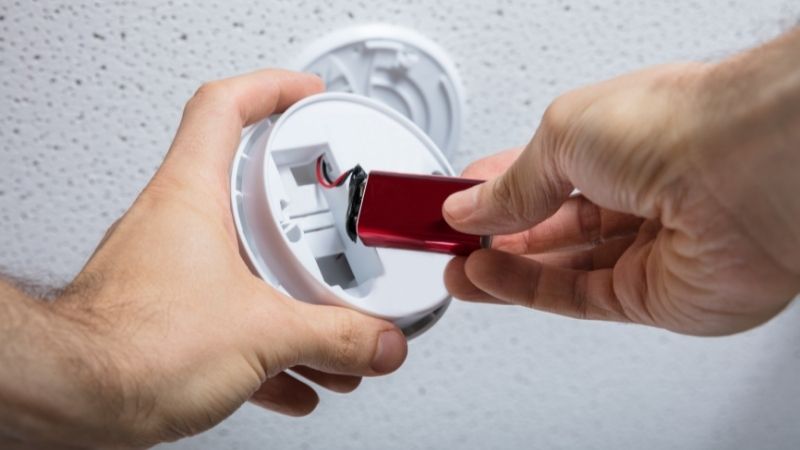Batteries are essential in our daily lives, powering numerous devices such as clocks and flashlights. Today, let’s explore how to identify the common types of batteries available in the market.
1. Identify batteries based on their size
AAA Batteries
- AA Batteries
 AA Batteries
AA Batteries
AA batteries are commonly used in portable electronic devices such as wall clocks and remote controls. They are sometimes referred to as “AA” or “double-A” batteries. This type of battery is more widely used than the 3A battery.
AA batteries typically weigh around 23 grams, with a diameter of 13.5 to 14.5 mm and a length of approximately 49.2 to 50.5 mm. Devices designed for AA batteries usually have a voltage of 1.5V.
-
AAA Batteries
 AAA Batteries
AAA Batteries
AAA batteries, also known as “triple-A” batteries, are a standard-sized dry cell battery commonly used in remote control electronic devices or small gadgets such as MP3 players, digital cameras, and hearing aids. AAA batteries are usually smaller, measuring 44.5 x 10.5mm, and have a capacity of approximately 300 mAh.
C-Size Batteries (or C Batteries)
 C-Size Batteries
C-Size Batteries
C-size batteries, also known as C batteries, are a common type of battery in the market. They measure 50 x 26mm and typically have a capacity of 6000mAh. These batteries are cylindrical and can be used in various devices such as gas stove igniters and cassette players. There are two main types of C batteries: single-use and rechargeable. Single-use C batteries can be made of different materials, but the most common types are carbon and alkaline.
D-Size Batteries (or D Batteries)
 D-Size Batteries
D-Size Batteries
D-size batteries, also known as LR20 batteries, have the largest capacity among cylindrical batteries, with a maximum capacity of up to 12,000 mAh. This makes them ideal for use in large flashlights. D-size batteries typically measure 60 x 34mm.
Button Cell Batteries (or Coin Batteries)
 Button Cell Batteries
Button Cell Batteries
Button cell batteries, also known as coin batteries, are flat and resemble a shirt button. Due to their compact size, they are commonly used as power sources for small devices such as watches and toys. Additionally, you can find button cell batteries in computer motherboards and personal computers. These batteries are very small, with a diameter of approximately 20mm and a height of 2.9 to 3.2mm, depending on the device. Button cell batteries typically have a capacity ranging from 110mAh to 150mAh.
2. Identify batteries based on their chemical composition
Alkaline Batteries
 Alkaline Batteries
Alkaline Batteries
Alkaline batteries are made from potassium hydroxide (KOH), zinc (Zn), and manganese dioxide (MnO2). The potassium hydroxide, combined with activated carbon, serves as an electrolytic solvent, while zinc acts as the negative electrode and manganese dioxide as the positive electrode. Alkaline batteries are produced in various sizes, including AA, button cell, AAA, 4LR44, and 9V. They are commonly used in devices such as cameras, fingerprint locks, and blood pressure monitors.
Lithium Batteries
 Lithium Batteries
Lithium Batteries
Lithium batteries come in two types: lithium metal (non-rechargeable) and lithium-ion (rechargeable). These batteries use lithium in its pure metal form as the negative electrode material and a non-aqueous electrolyte solution. Lithium batteries are used in devices such as thermometers, laser pointers, and car remote key fobs. They are also found in remote-controlled toys and are commonly used in button cell, AA, and AAA batteries.
Zinc-Carbon Batteries
 Zinc-Carbon Batteries
Zinc-Carbon Batteries
Zinc-carbon batteries are the most common type of battery sold in the Vietnamese market today. Made from zinc, zinc oxide, and carbon, these batteries are inexpensive to produce and can be easily purchased anywhere. They are suitable for low-power devices such as toys, clocks, and remote controls. Common types of zinc-carbon batteries include “rabbit” and “swallow” batteries.
3. How to store and care for AA batteries
Remove batteries from devices when not in use
To reduce chemical leakage from batteries, it is recommended to remove them from devices when not in use and store them in a dry place. This is a natural phenomenon, and even the best batteries will eventually leak, just at a slower rate.
 Battery Storage and Care
Battery Storage and Care
Check the expiration date of batteries
It is important to regularly check devices that use batteries to prevent chemical leakage and damage. You can test the battery’s remaining power by placing it on a flat surface and observing its movement. If the battery bounces, it has lost at least 50% of its charge. If it does not bounce, it is new and still has over 80% energy left.
How to dispose of used batteries
 Used Battery Disposal
Used Battery Disposal
When AA batteries are depleted, they cannot be recharged, but there are a few things you can do: expose them to sunlight for an hour or use pliers to flatten them. After use, batteries are considered hazardous and non-biodegradable waste. Therefore, it is important to place used batteries in a clean glass or plastic jar and keep them away from children. Additionally, once a year, hand over these jars to garbage collectors and inform them that they contain used batteries so they can be properly disposed of according to regulations. Alternatively, take them to a nearby battery recycling center.
The information provided above covers the basic types of commonly available batteries in the market, hoping to help you understand these batteries better.

































